- Home
- Media Kit
- MediaJet
- Current Issue
- Past Issues
- Reprints (PDF)
- Photo Specifications (PDF)
- Contact Us
- PRIVACY POLICY
- TERMS OF USE
![]()
ONLINE
![]()
ONLINE

A Blend Of Tradition
And Innovation
Editors’ Note
In 2024, Francesco, Matteo, and Giovanni Allegrini took over the majority of the shares in their family business, which was already a leading producer of Amarone wine in Valpolicella. The company is now considered one of the most prestigious Italian wineries in the world. Currently, the three brothers own 86 percent of the company, while the remaining 14 percent is owned by their cousin, Silvia Allegrini. All of them play important roles in company management, showcasing the dedication and perseverance that inspire the company’s vision. Francesco is the CEO, Giovanni is the Cellar Coordinator and Brand Ambassador, and Matteo coordinates relations with foreign countries. Silvia is responsible for external relations and coordination with strategic partners.
Winery Brief
The Allegrini (allegriniwines.com) vineyards are located in three prestigious areas of Italian viticulture, namely Valpolicella, Lugana, and Soave. These vineyards dominate the landscape and produce wines that reflect the unique local terroir and style, with a focus on preserving the fruit’s integrity during the winemaking process. Starting from 2024, all of Allegrini’s wine-growing lands in Valpolicella Classica will be exclusively situated on hills. Since 1854, Allegrini has been an essential part of the history of Valpolicella Classica. The winery is located in Fumane, a province of Verona, and owes its existence to the intelligence and hard work of Giovanni Allegrini. In the 1960s, he transformed the agricultural practices of his ancestors into a thriving business and was one of the first to prioritize quality over quantity. The innovations he introduced were pivotal to the rebirth of Valpolicella and form the basis of the distinctive “Allegrini” style that has gained international recognition.
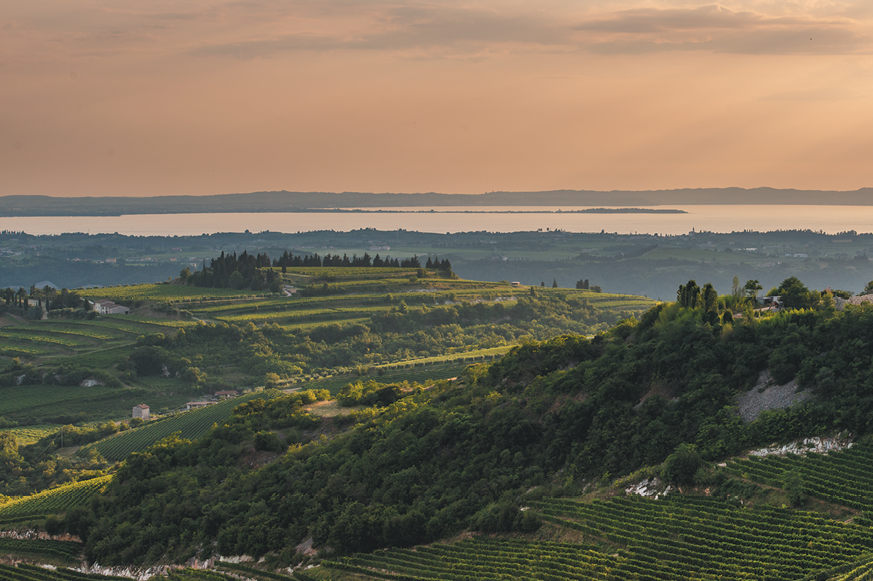
An Allegrini vineyard
Will you highlight the history and heritage of Allegrini Wines?
Founded in 1854, Allegrini has deep roots in the Valpolicella Classica region and is recognized for its commitment to quality, particularly with Amarone. Today, the company is led by me and my brothers, Matteo and Giovanni (holding 86 percent ownership) with our cousin Silvia owning the remaining 14 percent. Our ancestor, Giovanni Allegrini, set the company on its quality-focused path in the 1960s, a vision that continues to guide the brand. Launches like Corte Giara in 1989 brought Allegrini wines to a broader audience, while the new Allegrini Wine Distribution initiative expands the portfolio to include other brands. The recent development of Tenuta Merigo, a production center and tourism destination set to open in 2027, reflects the family’s blend of tradition and innovation.
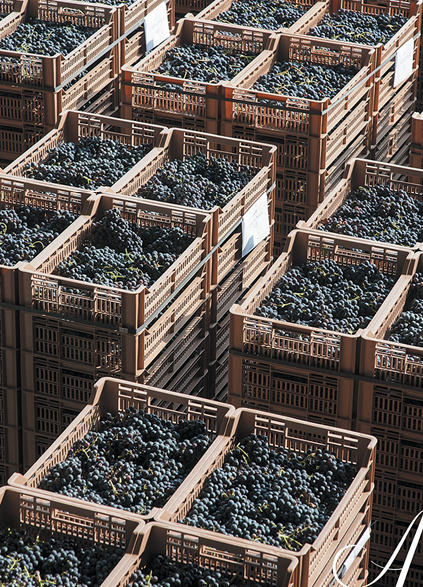
Crates of grapes from Allegrini vineyards
What have been the keys to Allegrini Wines’ strength and leadership in the industry?
Allegrini’s leadership is built on consistent quality, strategic partnerships, and a trusted distribution network. With a legacy dating back to 1854, the company offers a heritage that reinforces its reputation. Recently, a focus on Valpolicella Classica wines, a more structured management team, and collaborations with institutions like the Peggy Guggenheim Foundation and Altagamma have strengthened its standing. The creation of Allegrini Wine Distribution reflects the family’s adaptability to new market demands.
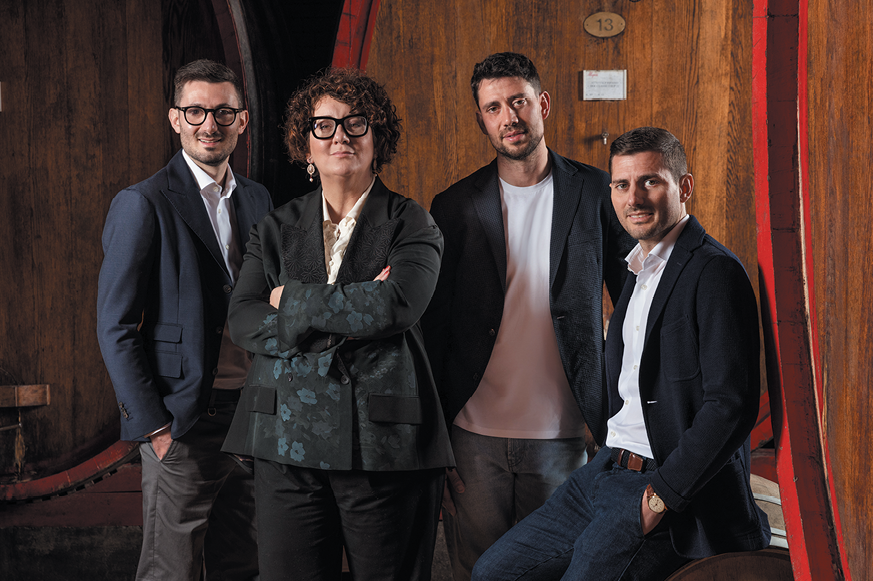
Allegrini owners Matteo, Silvia, Giovanni,
and Francesco Allegrini (left to right)
Will you provide an overview of Allegrini Wines’ offerings and vineyards?
As I mentioned, Allegrini is strictly connected to Valpolicella, and our main goal is to provide the best of the production of Valpolicella Classica, but since 2018 my father Franco also expanded the production in Lugana. So, discussing the main range of our wines:
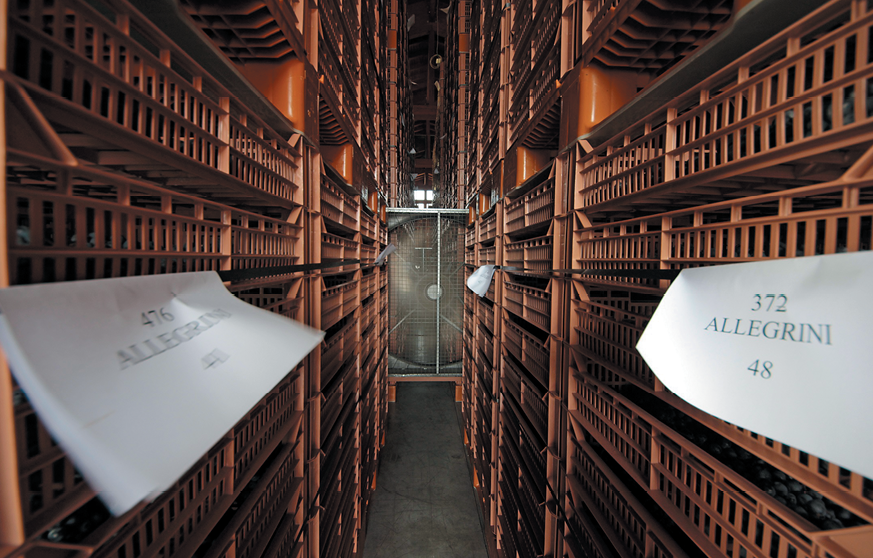
Appassimento - an Italian winemaking technique that
involves drying grapes off the vine to create a
more concentrated wine
Where do you see the greatest opportunities for growth for Allegrini Wines?
Valpolicella Classico, with its fresh, fruit-driven profile and balanced acidity, pairs well with a variety of foods and is ideal for a younger, modern audience. Its versatility makes it suitable for both casual gatherings and refined dining, positioning it as a growth driver for Allegrini.
How has technology impacted the winemaking process?
The Terre di Fumane facility embodies Allegrini’s commitment to quality. Here, grapes for Amarone are dried under controlled conditions, with air circulation ensuring an even drying process. Franco Allegrini’s introduction of barriques alongside traditional Slavonian oak barrels and innovative appassimento techniques enriches the wine’s quality.
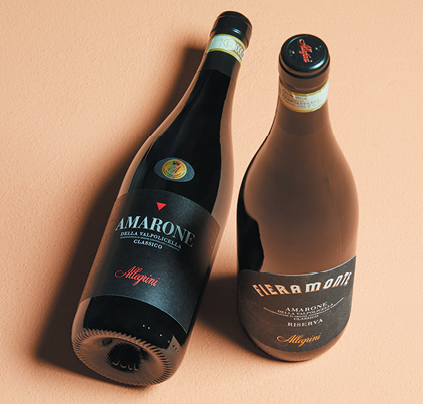
Allegrini wines
Will you discuss Allegrini Wines’ commitment to sustainability?
Sustainability is integral to Allegrini, with vineyards cultivated on diverse, hillside landscapes rich in biodiversity, including woods and meadows. Restoration projects preserve Valpolicella’s cultural and natural heritage. Partnerships with institutions and certifications like Equalitas, achieved in 2019, underscore the company’s commitment to responsible practices and transparency.
How do each of you focus your efforts at Allegrini Wines, and what has made the working relationship between the four of you work so well?
Each family member has a distinct role: Me, as CEO; Giovanni overseeing production and brand representation; Matteo managing exports and international relations; and Silvia coordinating strategic partnerships and external relations. Our complementary skills create a balanced and effective team.
What are your priorities for Allegrini Wines as you look to the future?
Immediate goals include developing the Tenuta Merigo production center by 2027, enhancing the Allegrini brand with a focus on the restaurant sector, and reducing production for quality. Corte Giara will be refreshed with updated branding and expanded distribution. Structural growth also involves recruiting new talent and implementing innovative practices and systems.![]()